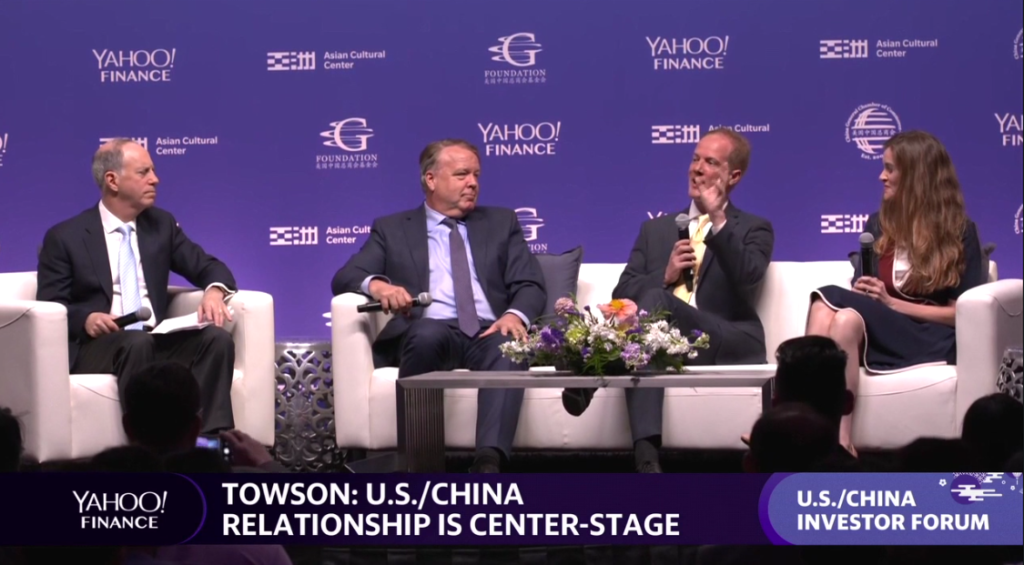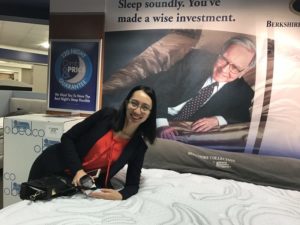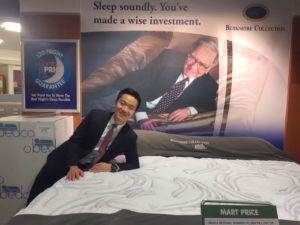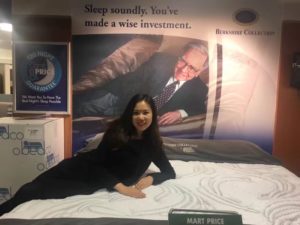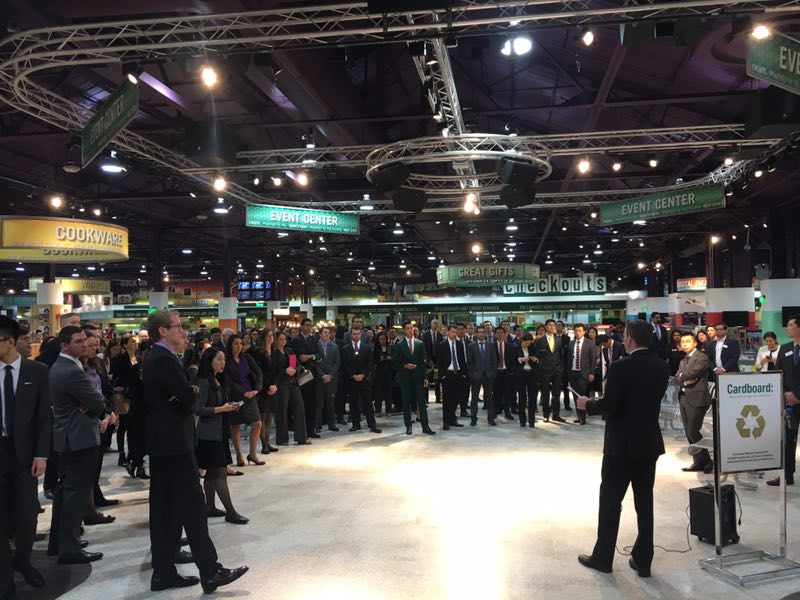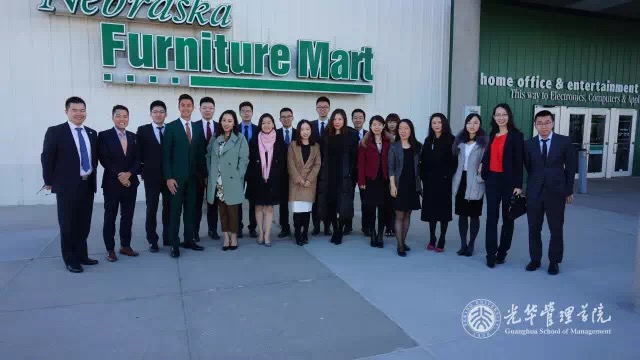In February 2017, I chaperoned 20 business students from Peking University to meet Warren Buffett in Omaha. This was the first group from Peking University to ever meet with Mr. Buffett – and only the second school ever from China. It turned out to be a once-in-a-lifetime trip, an investment pilgrimage of sorts.
In the following 4 articles, I document what happened and what we learned. I have included a lot of detail, especially on the Berkshire companies we visited and on Warren’s comments. Plus my general impressions. So this is a pretty long summary. Here is Part 1:
Part 1: Arrival in Omaha and Visiting the Nebraska Furniture Mart
I like Omaha. I like how crisp the air is. I like that there is almost no traffic. I like that I can get curly fries on almost every street. I also find I am calmer in Omaha – and that my thinking becomes clearer. It’s a place I feel increasingly comfortable in as I get older.
For my students, arriving in Omaha was more of a shock. For many, this was their first trip to the US. And for virtually all, this was their first trip to Nebraska. The quiet lifestyle of the American Midwest is about as big a change as you can find from life in Beijing. Plus, China is basically the opposite of the four things I just said I liked about Omaha.
About the students. It was a group of 20 and they were a mix of MBAs, Master of Finance students and undergraduates from Peking University. Half men and half women. The group was chosen by the school from several hundred applicants and after a fairly significant selection process. Also, as this was a China group, they immediately put together a WeChat group for the trip, which ended up documenting the whole thing. I got a constant stream of updates as students transited, landed, and got delayed at various airports on their way to Omaha. And post trip, everything immediately went out on social media. At last count, +20 Chinese websites had stories about our trip.
We officially kicked off with a dinner at the 360 steak house on the top floor of the Harrah’s in Council Bluffs. And yes, the entire group chose to stay at a casino while in Omaha. That part actually worried me a bit.
Our Visit to the Nebraska Furniture Mart
We boarded our bus and rolled out at 8am Friday morning, heading West across the river into Omaha. We were going to the Nebraska Furniture Mart, arguably the world’s most (and only?) famous furniture store. The history of this furniture store and its founder Rose Blumkin are part of Berkshire lore and well-known, so I will not repeat most of that here.
On the way to the store, I raised what would be the question for the day, which was: why did Warren Buffett buy this company? Or more specifically, what is its competitive advantage? So in this case, what is special about this retail furniture business such that it has a ridiculously big market share and ROIC?
We arrived at the 80 acre facility and my first thought was that the name “Furniture Mart” might be sarcastic. How is this a mart? It is a massive 6-7 warehouse and retail facility. It is the country’s largest furniture store, which is somehow in a city of only 400,000 people.
At the “Nebraska Furniture Mega-Complex” (better) we disembarked and met a couple of the other schools taking part in the day (University of Houston, UC Berkeley, Chicago Booth and others). As my research is in competition, my immediate first concern was “how can we beat these groups?” Beat them at what? Well, I don’t know. But how to win is my first instinct in any encounter in life. Yes, I know that’s screwed up.
The Head of Marketing Mark Hamilton gave us a nice welcome and introduction. He recounted the history of the store and it soon became pretty clear that the Peking students were going to stand out a bit. Members of our group immediately started asking question after question. Really good questions too. They also began taking lots of notes and photos. Plus they started posing on the “Warren mattress” for photos, recreating Warren’s not terribly masculine pose. I’m wondering if we were the first school to ever do that.
The other student groups watched and were generally amused. It is worth pointing out that while Chinese students can be stereotyped as quiet, note-takers in class (somewhat true), they are also hyper-competitive and are used to fighting their way onto buses and subways every day. So it wasn’t surprising that they were asking so many questions. My students are awesome.
Over the next +90 minutes, we got a fascinating tour of the furniture store. Below are my notes (I warned you this was going to be a bit long).
- Mrs. B. had originally left Russia by bribing a border guard with alcohol.
- After Russia, she traveled across China before finally arriving in the Northwestern USA. It would be interesting to look into that.
- Rose Blumkin originally settled a couple of hours from Omaha before moving into town to start her furniture business.
- The first store was founded in 1937 in downtown Omaha. It focused on furniture.
- In 1950, the company had cash flow problems. They had accumulated debt and Mrs. B held a big sale in the Omaha auditorium. The sales from this day paid off the debt and they have used little debt since.
- The company’s motto is “sell cheap and tell the truth”. They profit by their larger scale and by being hyper efficient. They live happily on small margins.
- In 1970, they moved West to their current location. They closed the downtown store in 1980.
- Warren Buffett bought majority control in 1983 with a one page agreement.
- In 1994, they added electronics and appliances. Today, they offer four categories – furniture, flooring, appliances and electronics.
- The Omaha store gets 10,000-20,000 customers per day. They have 400-600 sales people plus phone sales.
- The headquarters is located above the retail space.
- Management describes their buyers are surrogates for their customers and it is their job to find them the best deals and styles. Their supplier deals can change year by year. That bit is important.
- They have recently opened a Texas store. One of my students asked about the factors used to choose this location. Management kind of dodged the question but they did mention they feel they know customers in the middle of the USA very well. They said their focus is on building local efficiency and assembling good personnel in a geography. They said they also don’t want to interfere with Berkshire sister companies. He said they view their market as a 200 mile radius around the store. That seems important.
- They do offer in-house brands. The Warren mattress is popular.
- They have a particularly big pick-up area near the warehouse. Apparently it’s very efficient but we didn’t see it.
- There was some interesting discussion about their online store, in which they seek to “recreate the experience” of their physical stores. They raises the question of are customers (especially younger ones) becoming more comfortable with purchasing furniture purely online? Note: in China people buy big appliances like dishwashers and refrigerators online. Actually they buy them on their smartphones.
- Another question for the online store is does it change their pricing advantage? Management said they have bots that search competitor prices online and then update their own prices every day – by automatically updating the LED prices tags on items in the store. The price tag is connected and controlled by the computer through beacons installed in the store every 15 meters.
- They are moving towards designers and social networking. They want to seize opportunities and create trends through social networking, especially among younger customers.
So back to the question of competitive advantage. How did this business win? One of the nice things about studying Berkshire Hathaway is that their companies almost always have a big competitive advantage. So it’s fun to try and identify it. Here are some thoughts on this:
- The combination of the biggest selection and unbeatable prices has arguably been the biggest factor in their success. However, they also mentioned they can’t actually offer a bigger selection online, so that market is different. They also pointed to customers’ desires to sit and try out the furniture as still critical – but people buying online could be changing this.
- Management repeatedly mentioned low price and big selection as their key customer offering. The customer knows they can see all the options in one location. The customer also knows they don’t have to negotiate price or search around for a better deal. This low price + big selection offering eliminates the need to go to any other store.
- They anchor as the “destination retail community”. They target 80% of local customers, ignoring the very top and the very bottom of the market.
- Local economies of scale follow from the big fixed costs of the store and huge inventory. This scale is central to their unbeatable prices. The students identified this almost immediately. Note: management mentioned the Kansas City store has 450 sqft of space plus 600 sqft of warehouse.
- Having economies of scale within a circumscribed market is the critical scenario. In this case, the market is geographically limited (i.e,. 200 miles) by both the preferences for seeing furniture in person and the transportation costs.
- Management also emphasized their sales people are highly trained and are critical to their success. If they serve 10,000-20,000 customers to day and there are 400-600 of them, then that’s 16-50 customers per sales person per day.
- One of our student asked about margins and they said electronics and appliances are low margin, commodity products for the store (not surprising). The engine of the business is clearly still furniture – and possibly flooring? The other products like appliances are likely there for strategic reasons and so that they can be a one-stop shop for “home furnishing solutions”. It is also worth noting the differences in depreciation of inventory type. Carpets don’t go out of style and inventory doesn’t depreciate like apparel and electronics.
- They mentioned that they own their own distribution, except for the final leg of delivery into the customer’s home – which they contract but this difference is not seen by the customer. They mentioned delivery is a key part of the customer experience and that breakage is a significant expense. So they keep this mostly in-house.
- One comment management made was very interesting. They said the pace of change is much faster now, but the big decisions like for construction still take a long time to execute. That difference in timing is an interesting dynamic to think about.
Ok. That’s it for the Furniture Mart and Part 1. We all got back on the bus and headed for the big meeting with Warren Buffett. Lots of detail on that in Part 2, located here.
Cheers, Jeff
The entire Q&A and my complete summary are located here.
- Warren Buffett Q&A with Peking University (February 17, 2017)
- 7 Things I Learned from Lunch with Warren Buffett.
- I Took 20 Chinese Students to Meet Warren Buffett. Here’s What Happened (Part 1 here, Part 2 here, Part 3 is here, Part 4 is here)
——–
I write, speak and consult about how to win (and not lose) in digital strategy and transformation.
I am the founder of TechMoat Consulting, a boutique consulting firm that helps retailers, brands, and technology companies exploit digital change to grow faster, innovate better and build digital moats. Get in touch here.
My book series Moats and Marathons is one-of-a-kind framework for building and measuring competitive advantages in digital businesses.
Note: This content (articles, podcasts, website info) is not investment advice. The information and opinions from me and any guests may be incorrect. The numbers and information may be wrong. The views expressed may no longer be relevant or accurate. Investing is risky. Do your own research.
